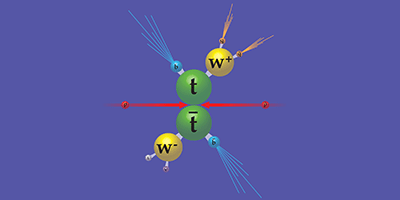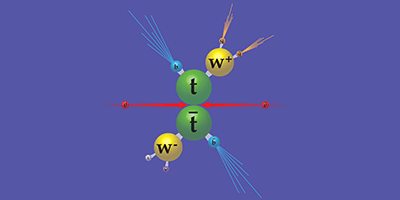Top Quark Mass Gets an Update
Researchers at Fermilab are reporting a new value for the mass of the top quark, the heaviest of the six known quarks. As described in Physical Review Letters, the top quark has a mass of giga-electron-volts (GeV) and a total uncertainty of , the most precise reported value based on a single measurement. Determining the top quark mass is considered one of the best tests of the standard model of particle physics, so even small refinements in its measured value can be used to constrain or rule out theories of new physics.
Discovered in 1995 by physicists working at the Tevatron particle accelerator at Fermilab, the top quark has a mass about times that of the proton. According to the standard model, the mass of the boson is related to that of the top quark and the Higgs boson, so precision measurements of these particles provide a consistency check on existing theory.
Although the Tevatron stopped operating in 2011, researchers running the D0 experiment there have been able to analyze a large, previously collected dataset to deliver a more precise value of the top quark’s mass. The data come from proton-antiproton collisions producing pairs of top quarks that ultimately decay into leptons (such as electrons or muons) and multiple quark “jets.” As in previous measurements, the D0 researchers analyzed the momenta of these leptons and jets to determine the mass of the top quark. But they considered more than twice the number of initial collisions and applied new, advanced analysis methods to reduce uncertainties. Their reported value for the top quark mass is about ( ) higher than the current world average, and—though based on only a single measurement—has a similar uncertainty. – Jessica Thomas





